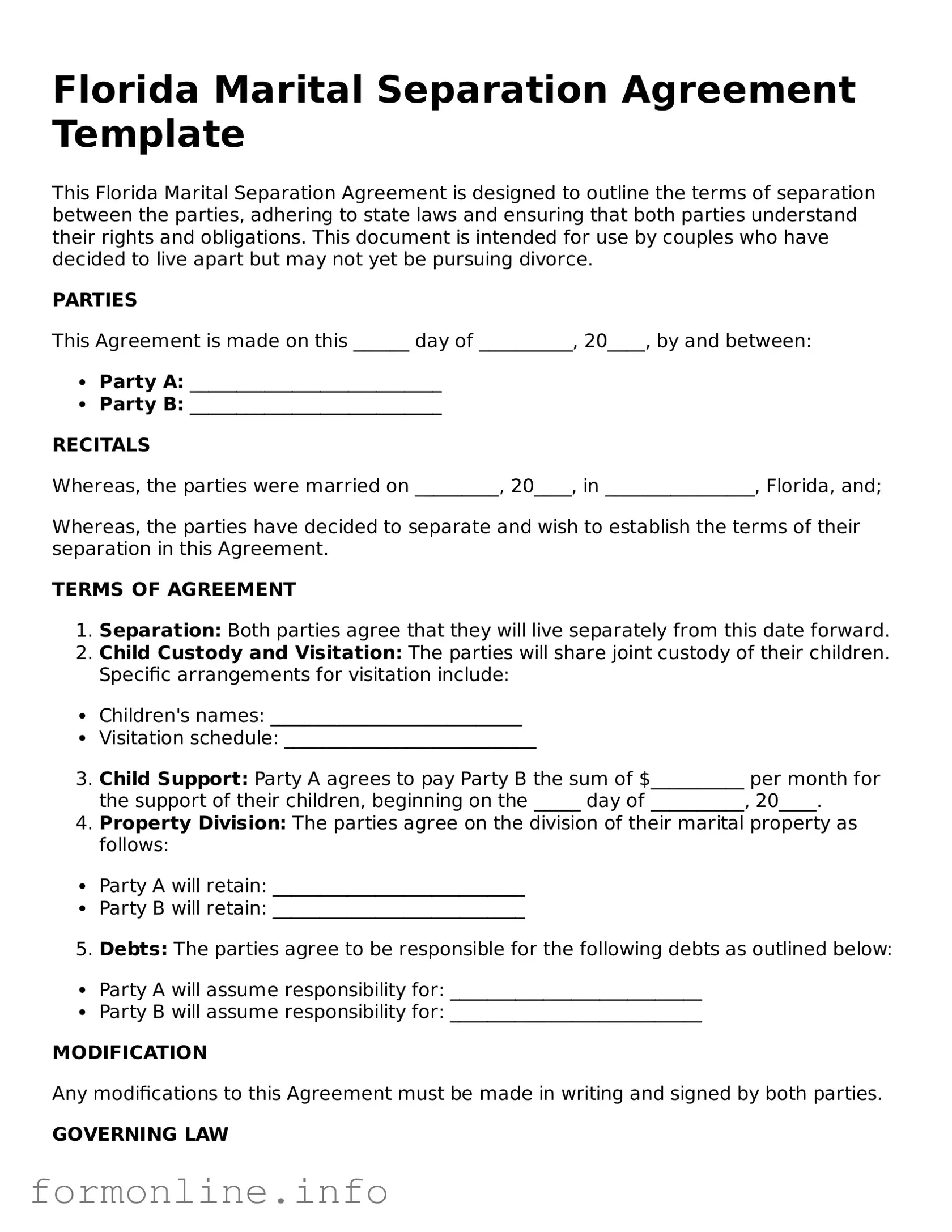Florida Marital Separation Agreement Template
This Florida Marital Separation Agreement is designed to outline the terms of separation between the parties, adhering to state laws and ensuring that both parties understand their rights and obligations. This document is intended for use by couples who have decided to live apart but may not yet be pursuing divorce.
PARTIES
This Agreement is made on this ______ day of __________, 20____, by and between:
- Party A: ___________________________
- Party B: ___________________________
RECITALS
Whereas, the parties were married on _________, 20____, in ________________, Florida, and;
Whereas, the parties have decided to separate and wish to establish the terms of their separation in this Agreement.
TERMS OF AGREEMENT
- Separation: Both parties agree that they will live separately from this date forward.
- Child Custody and Visitation: The parties will share joint custody of their children. Specific arrangements for visitation include:
- Children's names: ___________________________
- Visitation schedule: ___________________________
- Child Support: Party A agrees to pay Party B the sum of $__________ per month for the support of their children, beginning on the _____ day of __________, 20____.
- Property Division: The parties agree on the division of their marital property as follows:
- Party A will retain: ___________________________
- Party B will retain: ___________________________
- Debts: The parties agree to be responsible for the following debts as outlined below:
- Party A will assume responsibility for: ___________________________
- Party B will assume responsibility for: ___________________________
MODIFICATION
Any modifications to this Agreement must be made in writing and signed by both parties.
GOVERNING LAW
This Agreement shall be governed by and construed in accordance with the laws of the State of Florida.
IN WITNESS WHEREOF, the parties hereto have executed this Marital Separation Agreement as of the day and year first above written.
- ___________________________ (Party A)
- ___________________________ (Party B)
Witnessed by:
- ___________________________ (Witness 1)
- ___________________________ (Witness 2)
